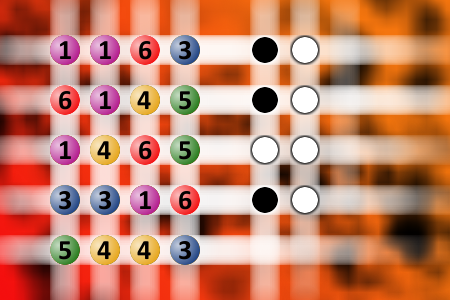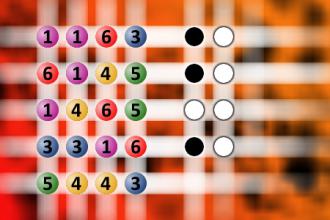What a winning combination?
The computer chose a secret code (sequence of 4 digits from 1 to 6). Your goal is to find that code. Black circles indicate the number of hits on the right spot. White circles indicate the number of hits on the wrong spot.
Researchers for the Massach...
Researchers for the Massachusetts Turnpike Authority found over 200 dead crows near greater Boston recently, and there was concern that they may have died from Avian Flu.
A Bird Pathologist examined the remains of all the crows, and, to everyone's relief, confirmed the problem was definitely NOT Avian Flu. The cause of death appeared to be vehicular impacts.
However, during the detailed analysis it was noted that varying colors of paints appeared on the bird's beaks and claws.
By analyzing these paint residues it was determined that 98% of the crows had been killed by impact with trucks, while only 2% were killed by an impact with a car.
MTA then hired an Ornithological Behaviorist to determine if there was a cause for the disproportionate percentages of truck kills versus car kills.
He very quickly concluded the cause: When crows eat road kill, they always have a look-out crow in a nearby tree to warn of impending danger.
They discovered that while all the lookout crows could shout “Cah”, not a single one could shout “Truck.”

